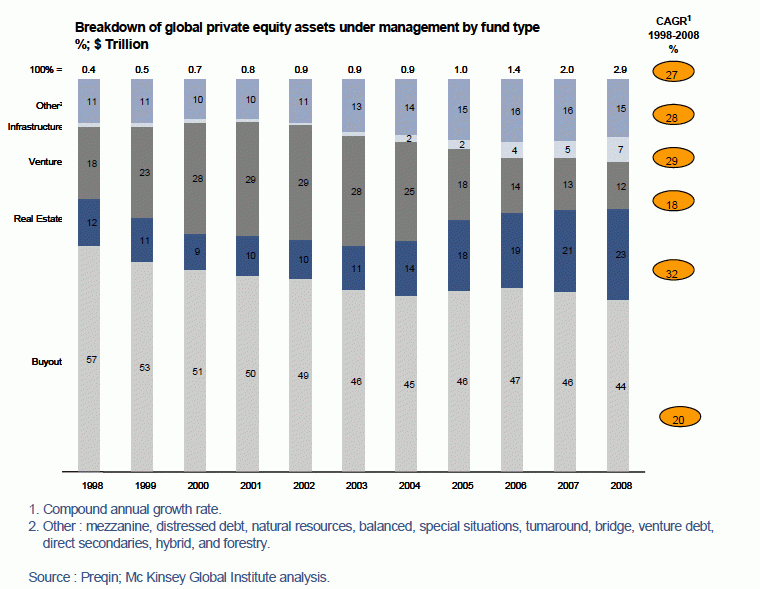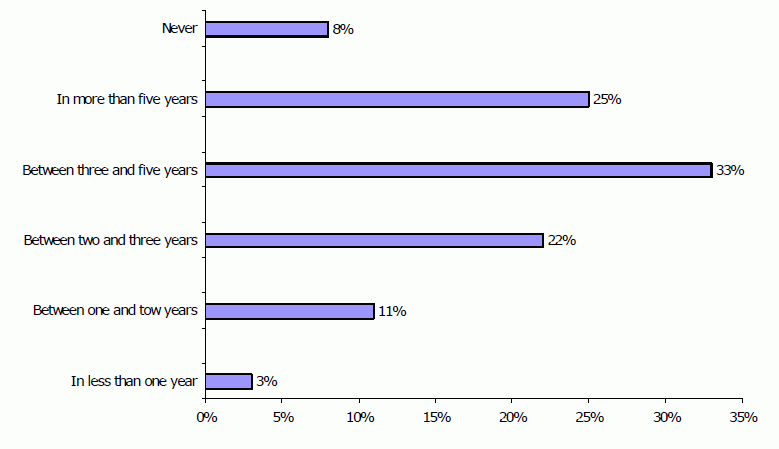Letter number 44 of October 2009
ALL ARTICLES
- TOPIC
- STATISTICS
- RESEARCH
- QUESTIONS & COMMENTS
News : A few valuations mistakes to be avoided
In the current economic climate, we'd like to draw your attention to a few mistakes in the area of valuation techniques that it would be well worth your while to avoid making as they could have serious consequences.
The value of debt
We have written (1), when calculating the value of capital employed and the value of equity, whether using the DCF method or comparative methods, bank and financial debts must be factored in at their market value and not at their book value.
Most of the time, for companies that are solvent and/or for which market conditions have not changed substantially since these debts were issued, there is little difference between their market and their book value.
Under IFRS or US Gaap, these calculations are easy to do, as companies now provide the estimated value of their debts in the appendices to their accounts.
For example, here are the values of few group’s bonds that are maturing in 2013, as a percentage of the normal value:
Ford has $154bn in financial debt on its balance sheet, compared with a market value of $122bn, which is a difference of $32bn, which is six times the group's market capitalisation of $5.5bn, and we won't mention the situation at General Motors before its bankcrupty.
Debt beta
Along the same lines, the assumption that the debt ß could be considered as equal to zero (which is the key feature of risk-free debt) is no longer acceptable.
However, this is one of the assumptions made for calculating the unlevered ß (2) using the formula:
where βd is the β of the debt, βe is the equity beta and β the unlevered β. V stands for value.
When a company’s capital employed is relatively volatile, and thus risky and/or it is carrying a lot of debt, part of this volatility is absorbed by the debt.
This explains why the value of the debt can differ from its book value, and accordingly, why the debt ß is no longer zero.
In these circumstances, assuming that the debt ß is zero, as in normal times, is an error. It doesn’t reflect reality and results in the undervaluation of the volatility and market risk of the capital employed. Unlevered ß is then only determined by the ß of equity, as the share of volatility that has been absorbed by the debt has disappeared from the computation which is simply wrong.
To illustrate this, we used data from April 2009 to calculate the cost of capital of various groups, using a zero debt ß or an estimation:
Given current market risk premium (around 6.7% according to Associés en Finance), a difference of 0.150 vs the unlevered ß, results in a cost of capital that is higher by 100 base points (1 %), which is certainly not negligible!
The risk-free money rate in emerging countries
There are currently countries in which the Government borrows at higher interest rates than the most highly rated issuers of debt in the country (Ukraine, for example).
This creates a problem when determining the risk-free rate.
In general, the Government is assumed (and observed) to issue debt at a rate that is deemed to be risk-free rate, as the Government, unlike private players, has the power to raise taxes to pay down its debts.
We were recently confronted with this difficulty and we used, as the risk-free rate, the rate on a bank loan that was recently granted to a group in the country that was carrying little debt and that had a solid economic model.
Even though it wasn’t a risk-free rate, it was at least the lowest interest rate in the country.
The pension deficit and other related issues
It is quite correct to consider the net difference between the value of pension assets and the present value of a company’s commitments as an element of net debt (4). It can even be said to be recommended since the amount of the pension fund provision on the balance sheet is disconnected from economic and financial reality given the accounting conventions used.
Nevertheless, just because this figure is zero or low, you shouldn’t just move swiftly on to the next problem. You should always be suspicious of small differences between two large numbers.
Assets used to hedge commitments are essentially invested in shares, while the commitments themselves have the same quality as bonds. So a small difference between those two amounts could turn into a giant gap if the stock market suddenly plummets.
This will also impact on unlevered ß as shown by Bodie et al, in a work we summarised in the Vernimmen.com Newsletter n° 28 of September 2007.
We were recently confronted with the case of a company whose past results and business plan showed little sensitivity to the economic situation, which led us to expect that its unlevered ß would be low.
However, the calculation, which factored in a low amount of pension deficit net of pension assets, yielded a figure close to one.
Once the nature of the hedging assets (essentially shares), were factored in, the unlevered ß fell to 0.6. Part of the volatility evidenced by the equity ß of this company is not explained by the volatility of capital employed, but by the volatility of this portfolio of pension assets made up mainly of shares, structurally financed by debt, like any good hedge fund.
Performance of equity betas
If the economic and financial crisis had had the same impact on all firms, the ßs would have remained stable.
But, as can be seen everyday, the impact has been far greater on some sectors (banking, construction, automobile and aeronautic) than it has been on others (food, health, etc …).
However, as the market ß has remained the same, and by construction equal to 1 (5), the ß of firms that have been less impacted have, on the contrary, fallen:
Accordingly, if you use a current market risk premium to estimate today's value of a share, as we recommend (6), it would be a good idea to update your betas!
If you don’t, your estimated rate of return will be too low for the riskiest shares and too high for those that are the least risky
With an equity market risk premium that rose from 3% in June 2007 to 6.7% in October 2009, the extra return expected by the shareholders of Danone compared with the risk-free interest rate has increased by 60%, from 2.5% to 4.0%, and nearly tripled for Peugeot, rising from 2.9% to 8.4%.
(1) For more details, see page 655 of the Vernimmen.
(2) For more details, see page 449 of the Vernimmen.
(3) For more details, see chapter 23 of the Vernimmen.
(4) For more details, see page 110 of the Vernimmen.
(5) For more details, see chapter 21 of the Vernimmen.
(6) For more details, see Vernimmen.net Newsletter n° 26 of July 2007.
Research : How fair are fairness opinions?
The issue of a fairness opinions (FO) is almost standard practice during M&A transactions. It works like this: the board of directors (of either the buyer or the target) asks an investment bank or a specialised firm to confirm that the contemplated transaction is fair, and that shareholders will not be short-changed by the price offered. This month we set out the results of the first major study on the effects of FOs (1). It is based on figures collated from 1,500 operations on the US market over 1994-2003.
One of the key reasons why management will request an FO is the legal protection it brings (2). A statistical analysis confirms that FOs are requested more frequently when there is a bigger legal risk for management. This is the case when the operation is:
• big (because of the large sums involved);
• “friendly”, i.e., there is no attempt to solicit alternative offers that could push up the price;
• paid in the buyer’s shares (because of the significant consequences for its shareholders).
Kisgen et al show that the use of FOs increases the probability of the deal being completed. When the FO is issued by the banker that is also handling the transaction, there is likely to be a conflict of interest. A large share of the bank’s fee depends on the transaction being completed, making it more likely to issue a positive FO. In such cases, the FO’s only purpose is to provide legal protection to management.
Another possible reason for requesting an FO is the real improvement in the quality of the transaction for the shareholders. An FO is of particular interest to the acquiring company, whose shareholders could end up losing money if the premium paid is too high. Kisgen et al found that the premium paid by buyers that obtained FOs was lower by 4.3%, all other things being equal.
Whether FOs lead to more favourable negotiations or whether they serve to raise the alarm about premiums that may be too high, the result is positive for the shareholders of the acquiring company. Symmetrically, the use of an FO by the target can lead to a higher premium for the target company (3).
Surprisingly, however, the acquiring company’s share performance at the time of the announcement is worse when an FO is issued than when one is not issued! The market fears that management is using the FO to protect itself when it is planning a mediocre or inferior deal, and it sees the FO as a negative signal. Kisgen et al refine their analysis and show that this underperformance is in fact concentrated on transactions on which the premium paid is high. When the premium paid is low, the use on an FO does not penalise the share. In other words, the market firmly rejects all transactions on which the premium paid is high AND those for which the acquirer has obtained an FO from the banker handling the transaction.
Finally, this study looks at the results obtained when several FOs are issued, especially by banks that have no link with the transaction. This only concerns 10% of FOs even though it is an excellent way of reducing conflicts of interest and market suspicion about the procedure (the lower the price, the more negative is the market's reaction). As the cost of obtaining an FO is very low when compared with the amounts at stake, firms are encouraged to request FOs from banks other than those handling the operation. They may, however, have to be persuaded to disclose the necessary information, which is often very sensitive.
(1) D.J.KISGEN, J.Q.QIAN et W.SONG (2009), Are fairness opinions fair ? The case of mergers and acquisitions, Journal of Financial Economics, vol.91, pages 179-207.
(2) The 1985 case of Smith vs Van Gorkom served as a wake-up call for many managers, when the target company’s management was ordered to pay heavy damages for having neglected to seek advice on the price offered. This marked the start of the boom in FOs in the USA.
(3) Kisgen et al do not publish any figures in this regard as their results are not statistically sufficiently stable.
Q&A : What are profits or losses from dilution?
Where a parent company does not subscribe either at all or only partially to a capital increase by one of its subsidiaries that takes place above the subsidiary’s book value, the parent company records a dilution profit.
Likewise, if the valuation of the subsidiary for the purpose of the capital increase is less than its book value, the parent company records a dilution loss.
For instance, let us consider the case of a parent company that has paid 200 for a 50% shareholding in a subsidiary with shareholders’ equity of 100. A capital increase of 80 then takes place valuing the subsidiary at a total of 400. Since the parent company does not take up its allocation, its shareholding is diluted from 50% to 41.67%.
The parent company’s share of the subsidiary’s equity decreases from 50% ´ 100 = 50 to 41.67% ´ (100 + 80) = 75, which generates a non recurrent gain of 75 – 50 = 25. This profit of 25 corresponds exactly to the profit that the parent company would have made by selling an interest of 50% - 41.67% = 8.33% based on a valuation of 400 and a cost price of 100 for 100%, since 25 = 8.33% ´ (400 – 100).
Dilution gains and losses generate an accounting profit, whereas the parent company has not received any cash payments. They are by their very nature non-recurring. Otherwise, the group would soon not have any subsidiaries left. Naturally, they do not form part of a company’s normal earnings power and so they should be totally disregarded.
* * *
Multifractal volatility (Theory, Forecasting, and Pricing) by Laurent Calvet and Adlai J. Fisher)
In this new and widely acclaimed book, Calvet and Fisher present a powerful, new technique for volatility forecasting, which draws on insights from the use of multifractals in the natural sciences. A large literature (e.g., Engle, 1982) specifies volatility as an average of past shocks, possibly with a noise component. The traditional approach has difficulty capturing sharp movements in asset prices and large changes in financial volatility. Using the intuition that some economic phenomena are long-lasting while others are more transient, Calvet and Fisher show the advantages of modelling volatility as subject to abrupt regime changes of heterogeneous durations. The resulting Markov-Switching Multifractal (MSM) model is easy to estimate and substantially outperforms some of the best traditional forecasting models such as GARCH and fractionally integrated GARCH. Calvet and Fisher emphasize both theoretical and empirical applications, beginning with a style that is easily accessible and intuitive in early chapters, and extending to the most rigorous continuous-time and equilibrium pricing formulations in final chapters. The book also includes a foreword by John Y. Campbell, the former president of the American Finance Association.
Laurent E. Calvet is a Professor of Finance at HEC Paris and a Faculty Research Fellow at the National Bureau of Economic Research (USA). Adlai J. Fisher is an Associate Professor of Finance at the University of British Columbia.
This book can be ordered with Amazon by clicking here.
* * *
SURVEY REGARDING THE RECOVERY IN THE STOCK MARKET
The following questions was asked on the home page of the Vernimmen.com website : the MSCI world index reached an all-time high around 1,700 in 0ctober 2007. It is now close to 950. When do you thing it will again to above 1,700 points?
The new survey is : who should bear the most blame for their role in in the financial crisis?
• the regulators who didn't see it coming
• investors who are always after bigger returns
• the monetary authorities who left too much cash floating around the economy for too long
• traders who only ever think about themselves
• banks who lent money to all and sundry
• the rating agencies who gave AAA ratings to assets that weren't worth the paper they were written on
• firms that took on too much debt
• teachers of finance who were unable to pass on their knowledge
• students of finance who failed to spend enough time buried in their books (especially the Vernimmen)
• nobody, crises are inevitable
• the whole capitalist system, which doesn't work
Click here to give your opinion






